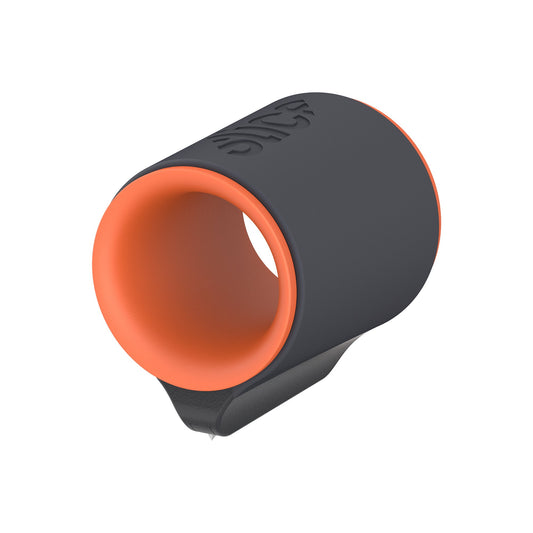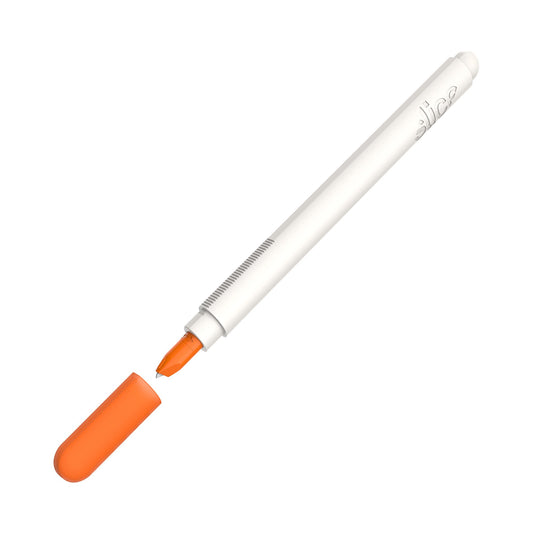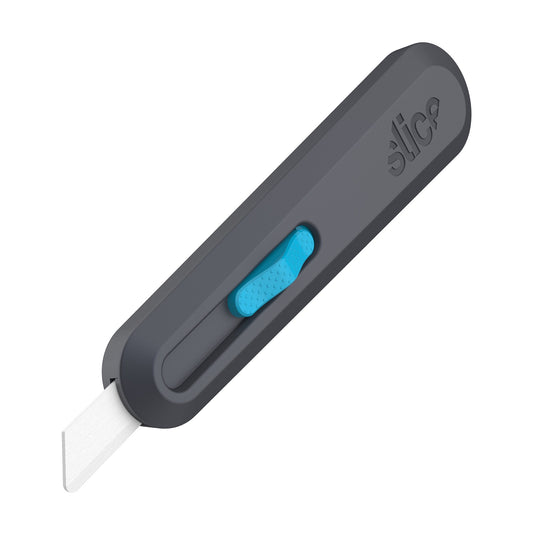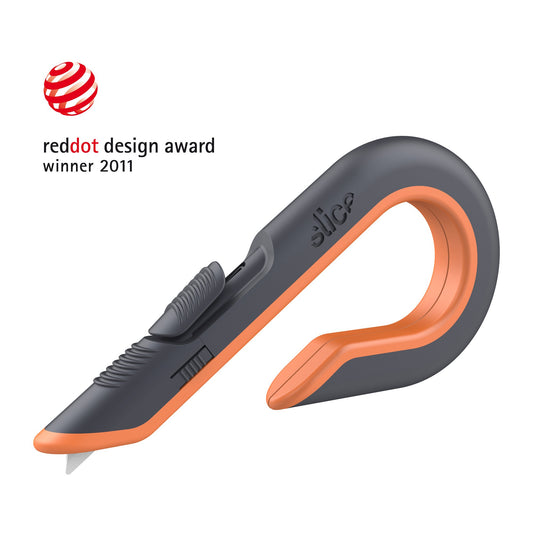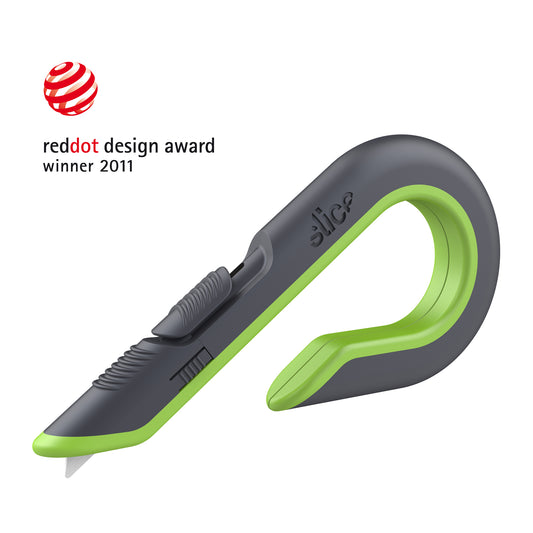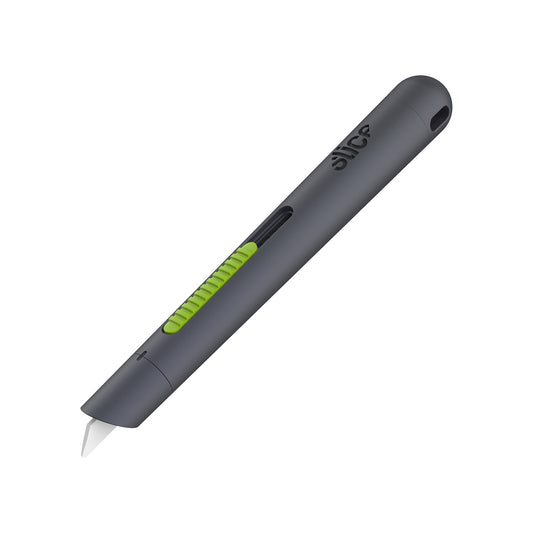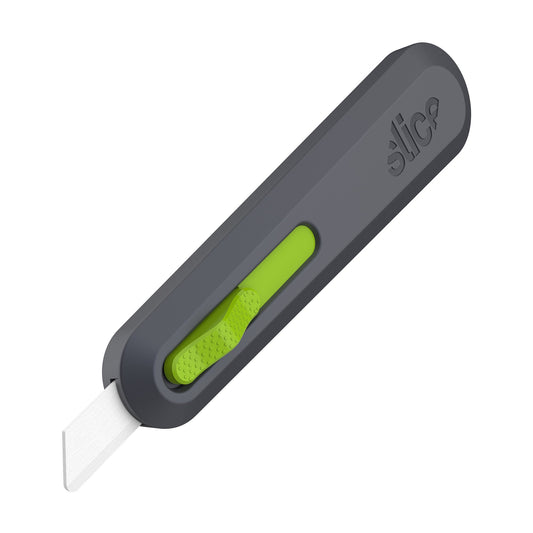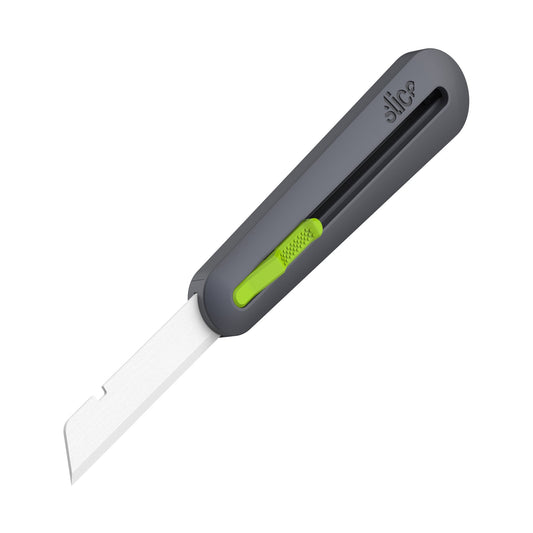The Safety Knife: How to Find the Safest
A huge variety of tools sport the label ‘safety knife’, but they vary in terms of purpose, ergonomics, blade choice and, yes, safety. So how do you choose the best safety knife for you? What qualities should you look for?
There are two main components to any safety knife: the handle and the blade. In the past, when manufacturers looked for safer ways to cut, they redesigned the handle to reduce blade exposure. In fact, charts classifying knives according to their handle design are used industry wide. This approach is a good start, but it represents a limited understanding of safety. Focusing exclusively on the handle sidesteps the cause of lacerations: the blade.
In this deep dive, we highlight often-overlooked safety aspects of handle design, as well as features that put Slice® safety blades in a class of their own. This quick video demonstrates that Slice blades are much safer than traditional metal and ceramic blades.
Safety Knife Blades
From the beginning, Slice has asked: What is a safety knife? We’ve gone beyond handle-centric industry efforts and developed a true safety blade. Slice safety blades feature a patent-pending finger-friendly® grind: you can safely touch the blade edge. This video further explains how Slice blades differ from traditional metal and other ceramic blades:
Another Slice innovation is the microblade: a tiny embedded blade with the same finger-friendly grind as our larger blades. Our micro-ceramic blade tools include our Safety Cutter, Precision Cutter, and Safety Cutter Ring.
The Slice micro-ceramic-blade tools are ideal safety knives for cutting plastics, paper, or any other thin material. Because the tiny blades are extremely unlikely to penetrate skin, these tools are favorites with adults who have impaired motor skills or limited dexterity, and those who work with children.
Blade Materials

Slice uses 100 percent zirconium oxide, an advanced (or engineered) ceramic that’s much harder than steel. This hardness dramatically increases its wear resistance, which is why Slice blades lasts up to 11 times longer than steel. As a result, Slice knives require fewer blade changes, further reducing the chance of accidental cuts.
Engineered ceramics have the added bonus of never rusting, and being non-magnetic, non-sparking, and chemically inert. They don’t require any rust-proofing oil coating and are safe for clean rooms and autoclaves.

It’s important to note that, while other ceramic blades may share some of properties of Slice blades, not all of them have the same material composition, so there are no guarantees. In addition, none of them have Slice’s proprietary grind, which reduces the chance of lacerations.
Safety Knife Handles
Manufacturers of the industrial safety knife have traditionally focused on reducing blade exposure to mitigate risk of injury. Whether a blade endangers its user while cutting or is left exposed to cut an unsuspecting co-worker, exposure is often to blame. And, as with any hand tool, repetitive strain is always a risk. These two handle-related design features make knives less hazardous: handle shape and blade retraction mechanism.
Safety Knife Ergonomics and Handle Shape
When choosing the best safety knife, safety managers must consider the impact of repetitive strain injuries (RSIs) and the long-term damage they can cause. RSIs are one of the most common workplace injuries. Slice handles are designed to reduce muscle strain in the upper and lower arm muscles, as well as the wrist and hand muscles.
In 2017, Slice developed Ergo Pull™, a unique slider that the user pulls, rather than pushing, to expose the blade. The effect of this change is to reduce the opposing forces of pushing a slider while pulling a knife. Ergonomic testing* bears out the advantages of Ergo Pull. An independent report stated that, “The Slice [Ergo Pull] resulted in lower forearm and hand muscle effort than the standard push blade lever utility knife”.

The Ergo Pull™ feature is available exclusively in Slice’s 10558 Smart-Retracting Utility Knife.
The innovative handle design in Slice’s original box cutters offers ergonomic benefits, as well as additional protection. These safety utility knives, proven to reduce wrist movement and lower muscular effort, feature our unique and award-winning J-hook handle. This shape provides a cutting guide and protects fingers from staples and other hazards. It also shields the user’s hand from the edge of the blade.
Retraction Mechanisms
Retraction mechanisms represent a key area of innovation that eliminates blade exposure when the blade is not in use. A retractable design allows the user to engage a slider, choosing when to expose the blade. The most common retraction design—and also the most popular with safety managers—features a spring-loaded slider. When the user releases the slider, the blade automatically retracts. Slice offers auto-retractable models for many of our knives:
Self-retracting knives are increasingly popular as they provide an added level of safety. In this design, the blade retracts when it loses contact with the cutting material, even if the slider button is still engaged. If there’s no cutting pressure, the blade recedes automatically, preventing lacerations if the user loses control during the cut. The Slice Smart-Retracting Utility Knife features this added protection. Watch it in action here:
In some cases, especially in the workplace, an automatic retraction mechanism simply isn’t practical. When the task involves repeated cutting of the same material at the same depth over long periods of time, self- and auto-retraction mechanisms add unnecessary time and strain.
The manual-retraction option may be preferable in these cases, and Slice offers this design for our cutters, too. If you choose this style—which allows you to fix the blade in place but requires you to manually retract the blade after use—it’s especially important to look beyond the handle for safety features. Remember, it’s the blade that cuts you. With a design like this, which requires an extra step to retract the blade, the only way to make a knife safer is to have a safer blade. Of course, a safer blade reduces risks with any type of cutting tool.
Convenience Beyond Safety: Storage and Carrying Options

Accidents from blade exposure are often the result of improper storage or carrying. Slice includes better storage and carrying options in our handle designs as an added safety feature. For example, our box cutters can hook on clothing, keeping the blade outside your pocket and away from your skin. Many of our tools also have embedded magnets or lanyard holes to keep tools handy and off floor or seating areas.
Quality Tool Materials and Construction
Look for quality tools that are made well and built to last. Low-quality knives break more easily, and broken tools are dangerous tools. A sticky slider or loose blade results in poor performance, frustration, and potentially dangerous technique.
Most Slice handles are made of lightweight and highly durable glass-filled nylon, while others are constructed with metal. Our attention to detail and testing in tool construction means that all parts move smoothly and fit snugly over the long haul.
Always Ask the Right Questions
When you’re evaluating your tools, ask yourself: What—specifically—makes them safer? Is it the handle design alone? What about the blade? Is the tool ergonomic? This analysis is well worth your time. After all, why use a safety knife if you’re not going to use the safest? Taking a deeper look at safety will always give you the best return on your safety knife investment.
For further reading:
- Why Are Slice Blades Safer Than Traditional Blades?
- The Safety Blade: Everything You Need to Know
- Safety Cutting Tools: If It’s Ceramic, It’s Slice
* Testing done by U.S. Ergonomics, September 2016, Sea Cliff, New York.


